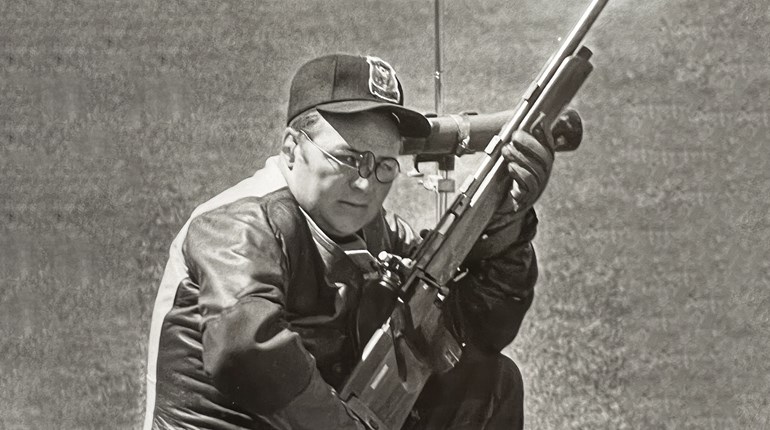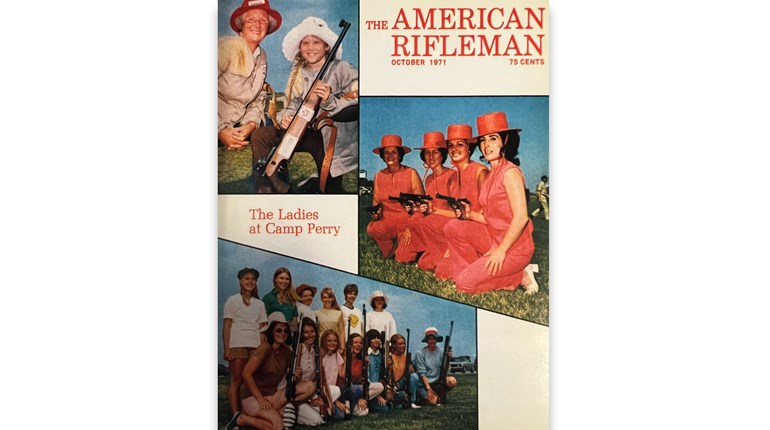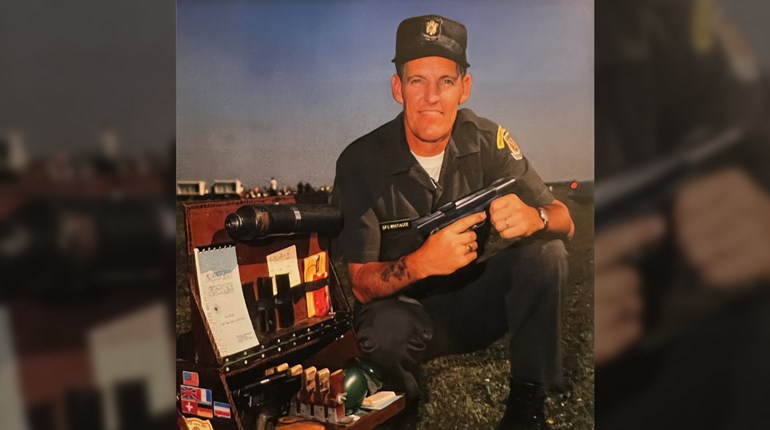
In 1975, an old, badly weathered piece of angular metal was plowed up in a farmer’s crop field in Ohio. Looking like it just might be a gun part, the brass piece was eventually identified as the buttplate of a Brown Bess musket. One amazing fact about the find was that the buttplate may have been some 200 years old, as the Brown Bess was in service from 1722 to 1838—well above a century. British made, the firearm had the distinction of both winning and losing the American Revolutionary War (1775-1783), as it was the gun of choice on both sides of the battle line.
Today, that buttplate, as well as a complete Brown Bess musket, is on display at the Log Cabin Shop and Museum (www.logcabinshop.com) near Lodi, Ohio. Rick Kindig owns and operates the gun store and museum, specializing in all aspects of muzzleloading firearms, both modern and traditional.
“No other gun parts—lock, stock or barrel—were ever found from that particular firearm,” said Kindig. “And how that buttplate got to Ohio is anyone’s guess. It may have been brought west on a Brown Bess by a frontiersman or a soldier after the war, or traded for by an Indian. We’ll just never know…”
The Brown Bess was a flintlock smoothbore musket of .75 caliber, a firearm capable of punching a sizeable three-quarter-inch hole in a human being or anything else it was aimed at. But like most muskets, the guns were notoriously inaccurate. During the Revolution, they were usually not fired at an enemy more than 50 yards away. And when they were fired the guns were not aimed, simply pointed, much like modern shotguns are today.
“It’s been estimated that the average Revolutionary War soldier had to be engaged in at least six major battles before he was likely to have actually hit and killed someone with his musket,” said Kindig.
At the time, the accepted European method of warfare—which carried over to America during the Revolution, even to the Civil War—was to line up ranks of soldiers shoulder to shoulder, then march within close range of the enemy before opening fire. But the soldiers didn’t fire individually whenever they felt like it. Rather, they fired only upon command and simultaneously, counting on volume of fire to devastate the enemy. It seems like madness today, but hiding behind cover and taking careful aim before pulling the trigger was considered ungentlemanly, even cowardly. It just wasn’t done.
Trained soldiers were capable of firing three to four rounds per minute from their Brown Bess muzzleloaders. The Americans had a 12-step loading process beginning with the command, “Half-cock your firelock,” and ending with “Fire!” The British loading commands had even more steps.
The Brown Bess was loaded with a “cartridge,” but not what we think of as a modern-day cartridge containing a metal casing, primer, gunpowder and bullet. Soldiers were given powder and lead, and expected to make their own cartridges prior to battle. The lead first had to be melted down and poured into a mold to form the 1-ounce round bullet. Next, a piece of paper was wrapped around a bullet and the end of a 6-inch wooden dowel rod. The rod was then removed and a pre-measured amount of gunpowder was poured into the paper cylinder formed by the dowel. The cartridge was tied off at one end with a piece of twine and the paper was twisted shut at the other end. The prepared cartridge was then placed in a wooden or leather box that held 20 to 30 cartridges. This cartridge box was attached to a strap and worn over the shoulder of the soldier, carried over the right shoulder if you were right-handed and vice-versa for lefties.
To load a Brown Bess, the soldier removed a paper cartridge from his cartridge box and tore off the twisted end using his teeth. He then poured a small amount of the gunpowder into the priming pan of the firearm, with the rest of the powder and the bullet going down the barrel from the muzzle. He then removed the ramrod from his musket, tamped the bullet in place, replaced his ramrod and was ready to fire at the next command.
Once the battle began it didn’t much matter that Brown Bess muskets were pointed rather than aimed, as after a few shots from both armies the blackpowder smoke was so thick there was little opportunity to clearly see an enemy. And to speed up loading during combat, bullets were usually cast to .69 caliber rather than the full .75 diameter, so they could still be easily loaded even after the inside of the barrel became heavily fouled with blackpowder residue.
Brown Bess muskets were also capable of holding a metal bayonet, which made the 10-pound guns heavier still. Measuring about 16 inches long, bayonets were of a tapering triangular design. The sides or edges of the blade were not sharpened but the end was kept wickedly pointed, the better to penetrate an enemy soldier’s clothing before entering his body.
Surprisingly, George Washington, leader of the Continental Army, preferred his troops have muskets rather than the more accurate rifles of the time. Even the Continental Congress preferred muskets, their secretary once opining, “If Congress could, it would replace all the rifles with muskets, as they are more easily kept in order, can be fired oftener and have the advantage of bayonets.”
A half dozen models of the musket were made through the years, but it wasn’t until the early 1770s that the term “Brown Bess” first appeared in print. There are several theories as to how the gun got its name; however, the true meaning has become lost over time. In essence, no one today really knows how this historic musket—the firearm that helped America win its independence from England—got its enduring name.
If you’d like to read more about the Brown Bess, two books are recommended: Red Coat and Brown Bess, by Anthony D. Darling; and The Brown Bess, by Erik Goldstein and Stuart Mowbray.






































